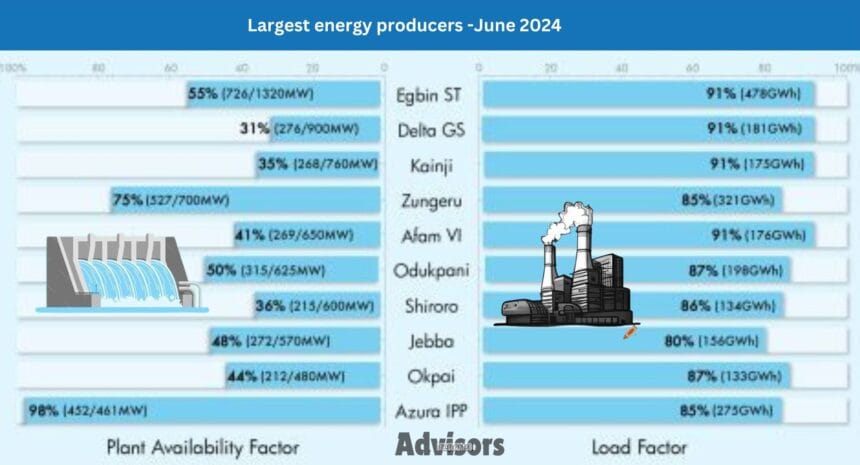… only 4,391 MW available
… Geregu NIPP generates 304 GWh, with 92% load factor
…Egbin ST leads with 476 GWh, with 91% load factor
… Ibom Power records lowest availability factor at 32%, contributes 111 GWh to grid
Oredola Adeola
The availability factor for grid-connected power plants in Nigeria remained low at 33%, with a total available capacity of 4,391 MW as of June 2024, suggesting persistent inconsistencies in the performance and operational efficiency among Nigeria’s 28 grid-connected power plants.
This was contained in the Nigerian Electricity Regulatory Commission (NERC) June 2024 operational performance factsheet of the active power plants, analyzed by Advisors Reports.
Based on the analysis, Femi Otedola’s Geregu NIPP, with an installed capacity of 435 MW, achieved an impressive 92% load factor, generating 304 GWh.
Egbin ST, Nigeria’s largest power producer, led the pack by generating 476 GWh, maintaining a 91% load factor.
Delta GS, Kainji Hydro Plant, and Zungeru also performed well, each achieving a 91% load factor and generating 191 GWh, 175 GWh, and 176 GWh respectively.
Afam VI, a gas plant, delivered 123 GWh with an 87% load factor.
Meanwhile, Ibom Power Plant, with an installed capacity of at least 189 MW, reported a 32% plant availability factor, contributing 111 GWh to the grid, being the lowest in the period under review.
Further analysis by Advisors Reports indicated that there was a 4% increase in total available capacity and a 13% rise in total energy generated, meanwhile the overall plant availability factor of 33% indicated significant room for improvement in operational efficiency and maintenance practices by the operators of the power plants.
However, several plants, including Omotosho NIPP and Alaoji NIPP, reported zero energy generation, suggesting operational or logistical issues that need urgent attention.
The grid’s frequency and voltage performance for the month of June, showed deviations from the set targets, with the frequency exceeding the upper limit by 1.5% and the voltage exceeding the upper limit by 3%.
The frequency and voltage both deviated from the set targets, with the frequency being higher and the voltage being slightly higher for the upper limits, and lower for the lower limits.
Additionally, grid performance metrics such as frequency and voltage showed slight deviations from targets, underscoring the need for continuous monitoring and adjustments to ensure stability.
Dr. Idowu Oyebanjo, Power System Engineer, reacting to data analyzed by Advisors Reports, emphasized that the much-touted total installed generation capacity of 13,500MW is not readily available.




